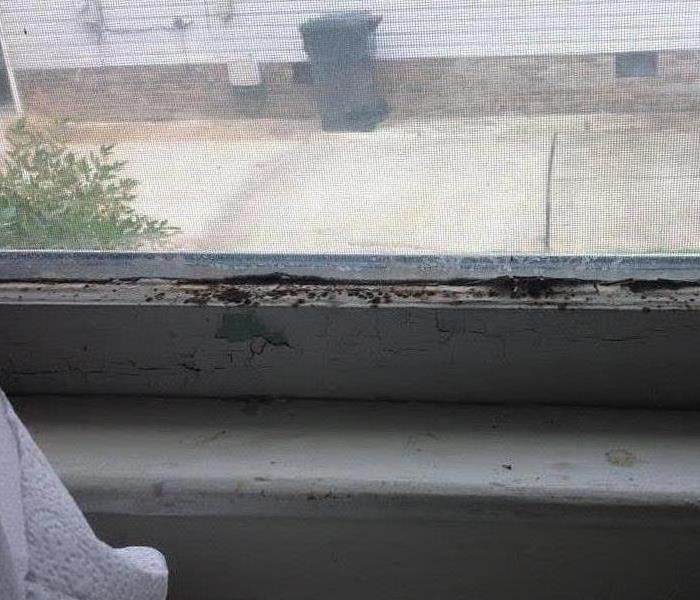Does Mold Grow During Winter?
12/10/2017 (Permalink)
 Mold grows anywhere it has a damp environment. While windows keep most moisture out of the house, their sills may have dampness from condensation.
Mold grows anywhere it has a damp environment. While windows keep most moisture out of the house, their sills may have dampness from condensation.
When temperatures start to drop, homeowners tend to stop worrying about mold and direct their attention toward household issues that are more commonly associated with cold weather. However, mold can develop in winter as well. While mold thrives in warm, humid environments, the primary contributor to mold growth is moisture, which can get out of hand at any time of year.
Excessive indoor moisture can be caused by a number of issues; water damage, plumbing leaks, leaky roofs, high indoor humidity, and condensation are potential concerns.
Condensation on and around windows, in particular, is normal and may seem harmless, but it is one of the biggest moisture culprits when it’s cold outside but warm inside—as is typically the case during winter.
Window condensation occurs when moisture in the warm air inside your home liquefies upon contact with glass or other surfaces that are drastically cooler due to freezing outdoor temperatures. High humidity contributes to this process because there is excess moisture in the air.
While minor condensation doesn’t usually lead to problems, it is important to dry window surfaces regularly to keep condensation from accumulating and being absorbed by the wood and drywall around the windows. Mold feeds on such organic materials and can develop in as little as 24 hours. Mold Prevent specializes in attic mold remediation.
If you are in need of mold removal services, SERVPRO of the Quad Cities can help!






 24/7 Emergency Service
24/7 Emergency Service